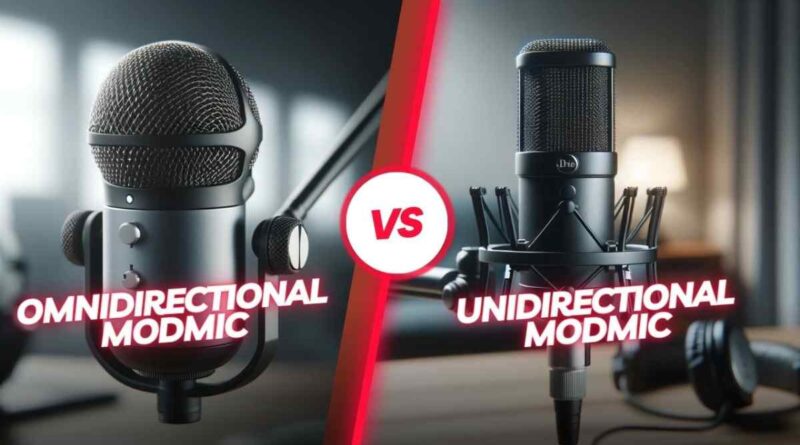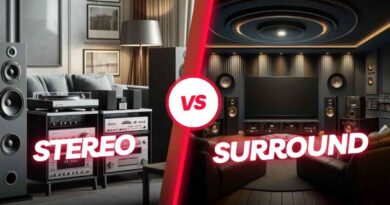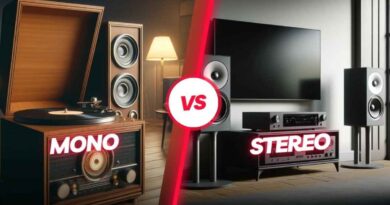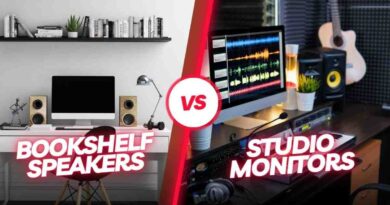Omnidirectional Vs. Unidirectional ModMic: The Difference
Thinking of adding a ModMic to your headphones? Awesome! But hold on, there are two mic types: omnidirectional and unidirectional. This guide boils it down for you, making sure your voice sounds crystal clear. Let’s go!
What Is An Omnidirectional Microphone?
An omnidirectional microphone captures sound equally from all directions. This means it does not favor sound from any particular angle. This type of microphone is ideal in environments where you want to capture the ambiance of the setting or when the sound source moves around the microphone.
- Even Sensitivity: Captures sound uniformly from all directions.
- Ambiance Capture: Ideal for recording a natural-sounding environment.
Omnidirectional microphones are perfect for round-table interviews, recording a group of people, or capturing ambient environmental sounds. These microphones generally have a wider frequency response and can pick up more room noise compared to unidirectional microphones. One key aspect of omnidirectional ModMics is their ability to maintain consistency in audio capture, even if the speaker moves slightly.
What is a Unidirectional Microphone?
Unidirectional microphones, often known as directional mics, are designed to capture sound predominantly from one direction. This design helps reduce the pickup of unwanted ambient sound, making it ideal for noisy environments or when sound from a specific direction needs to be isolated.
- Noise Isolation: Excellent at reducing background noise.
- Focused Audio Capture: Captures sound primarily from in front of the microphone.
These microphones are commonly used in podcasting, voiceovers, and other scenarios where focusing on a single sound source is crucial. A unidirectional ModMic, for example, would be suitable for gamers, streamers, or professionals who need clear audio without background interference.
Comparing the Build Quality
Omnidirectional ModMic
The build quality of an omnidirectional ModMic is designed with versatility in mind. It typically features a sturdy, flexible boom arm and a compact capsule that can handle varied environments without compromising on sound quality.
Unidirectional ModMic
Unidirectional ModMics are often built more robustly, as they are primarily used in settings that may involve more handling or movement. They usually have features that support noise cancellation, such as thicker housing to reduce resonance.
- Durability: Both mics are designed to last, but unidirectional mics may have slight edge in rugged environments.
- Flexibility: Omnidirectional mics are generally more adaptable to different recording settings.
Sound Quality and Performance
Omnidirectional ModMic
Omnidirectional ModMics excel in consistent sound quality across different sound sources. They tend to have a flatter frequency response, which means they can reproduce all frequencies nearly equally well.
Unidirectional ModMic
The sound quality of a unidirectional ModMic is more focused and isolated. It typically features a pronounced directionality with a heart-shaped (cardioid) pick-up pattern, which helps it to focus on sounds in front of the mic while attenuating sounds from the sides and rear.
- Sound Isolation: Unidirectional mics are better for isolating speech in noisy settings.
- Natural Sound: Omnidirectional mics capture more natural sound, making them ideal for realistic audio environments.
Usability and Setup
Omnidirectional ModMic
Setting up an omnidirectional ModMic is straightforward. Since it captures sound from all directions, positioning is less critical than with unidirectional microphones.
Unidirectional ModMic
A unidirectional ModMic requires more attention to positioning. The direction in which the mic points significantly affects its performance, making it crucial to angle it correctly towards the sound source.
- Ease of Use: Omnidirectional mics are generally more user-friendly.
- Setup Precision: Unidirectional mics need careful placement for optimal performance.
Ideal Use Cases
Omnidirectional ModMic
Ideal for recording situations where capturing the natural ambience is important.
Perfect for:
- Round-table discussions
- Field recordings
- Multi-person podcasts
Unidirectional ModMic
Best suited for scenarios that require focused audio capture, such as:
- Streaming
- Voiceovers
- Single-person podcasts
Ambient Sound: Omnidirectional is better when environment sound is desirable.
Focused Audio: Unidirectional is superior for isolating the speaker’s voice.
Advanced Features and Technology
Both types of ModMic boast advanced features, but they cater to different needs. Omnidirectional microphones may include technologies like wide frequency response and natural sound reproduction, while unidirectional microphones might focus more on sound isolation technologies and directional audio enhancements.
Technology Adoption: Each type incorporates different technologies to enhance their specific use case.
Innovations: Look for noise-cancelling features in unidirectional and enhanced sensitivity in omnidirectional mics.
Cost and Value: When considering the cost, both omnidirectional and unidirectional ModMics offer great value, but the choice depends on your specific needs. Generally, the price will reflect the microphone’s features, build quality, and the technology it incorporates.
Budget Considerations: Determine which mic features align with your needs.
Investment Value: Both are good investments, but your usage will dictate the best option.
Conclusion
Deciding between an omnidirectional and unidirectional ModMic comes down to what you need from your microphone. If you want to pick up sound from all directions and get natural-sounding audio, go for the omnidirectional ModMic. But if you’re in a noisy place or need to concentrate on one sound, the unidirectional ModMic is better. I like the flexibility of the omnidirectional one for everyday use, but the clear focus of the unidirectional model is crucial for pros.
Frequently Asked Questions
Which ModMic is better for podcasting?
For single-person podcasts, a unidirectional ModMic is better as it isolates the speaker’s voice from background noise.
Can I use an omnidirectional ModMic in a noisy environment?
It’s possible, but not ideal, as it will pick up a lot of ambient noise.
Is a unidirectional ModMic good for interviews?
Yes, especially in controlled environments where focusing on the interviewee’s voice is crucial.
How do I set up a unidirectional ModMic?
Position the microphone directly in front of the sound source for optimal audio capture.
Can an omnidirectional ModMic be used for professional recordings?
Yes, it is excellent for capturing natural and ambient sounds in professional recordings.
What should I look for when choosing between these ModMics?
Consider your primary use—ambient sound capture or focused audio—when choosing.
Do both types of ModMics require a lot of maintenance?
No, both are designed for durability and require minimal maintenance.
Which ModMic model is more durable?
Both models are built to last, but unidirectional mics often have extra features for handling noise and movement.
Are there any accessories recommended for either type of ModMic?
Yes, pop filters and shock mounts are useful for enhancing sound quality and reducing noise.




